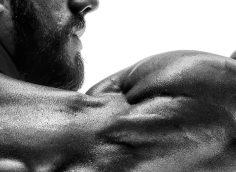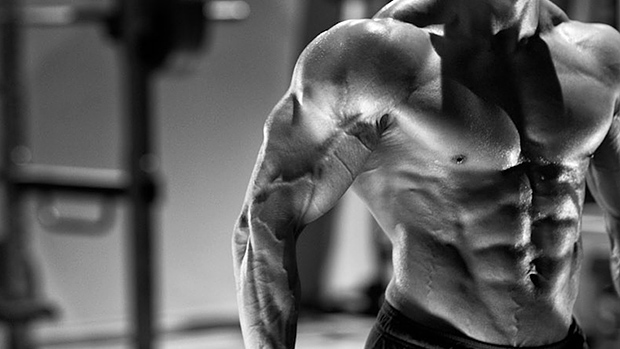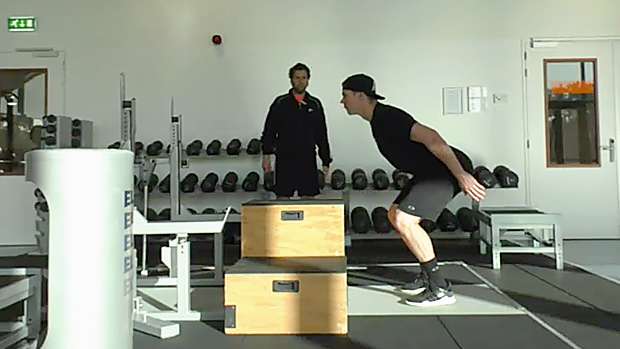The following movements have been strategically altered to address unique deficiencies in overhead pressing mechanics. Wipe out these deficiencies and you'll lift more weight AND do it safely.
This variation literally forces you to have perfect mechanics. For example, it will immediately expose lack of t-spine extension or exaggerated extension through the lumbar region by making you lose your balance.
Overhead presses are difficult enough as is, but throw in a kneeling component and you just raised the difficulty bar several notches. If you're capable, perform these on a bench rather than the floor. The fact that your feet can't anchor into the ground for support exponentially increases the difficulty.
To complete this move successfully, every facet of form and technique must be dialed in. Because there's little room for error, grab a spotter the first few times to make sure you don't face plant.
Closing your eyes on any exercise forces your muscle spindles and other proprioceptive mechanisms to work overtime in order to stabilize the movement and control the load. Overhead presses actually represent some of the more difficult variations for incorporating the eyes-closed technique. The overhead position raises your center of mass, making it even more challenging in terms of balance and motor control.
As a result of this, you'll be forced to slow the movement down and focus on technique, resulting in improved neuromuscular efficiency, motor unit recruitment, and movement mechanics. As an added benefit, the increased time under tension and muscle innervation produces incredible strength and size gains.

The reverse-grip press teaches you how to properly tuck your elbows and centrate your glenohumeral joint on the overhead barbell press. It's also a great movement for teaching lifters how to maximally recruit their triceps during the overhead press, which is critical for strength and size gains.
Similar to the reverse-grip variation, the close-grip overhead press is a great technique enhancer. It reinforces the idea of keeping the elbows tucked and close to the body while using a pronated grip.
The lockout proves much more challenging than a typical overhead press as the closer grip makes it more difficult to achieve this all-important finishing position. If you can teach yourself to drive the arms through and in line with your ears at the top of a close-grip overhead press, all other variations will become significantly easier.
This one's a bit unusual looking but it serves a very distinct purpose. Most lifters lack the ability to properly centrate their glenohumeral joint. This deficiency is even more pronounced during the overhead press. The pizza plate press – using the flat side of an iron weight plate – will provide immediate feedback as to whether or not your shoulder mechanics and overhead pressing technique are dialed in.
If you fail to create 3-dimensional shoulder stability by depressing, retracting, and medially rotating your scapula and shoulders towards your spine, you'll dump the weight plate. Even if you're able to avoid dumping it, observe the weight plate. If it stays completely parallel to the floor while you keep your elbows tucked to the front of your body, then you know your shoulder function and overhead pressing mechanics are good. If the plate fails to stay parallel to the floor, you'll then want to address your specific areas of weakness before you produce further dysfunction and possible injury.
Staying tight in the bottom of the overhead press is a critical component for optimizing technique, safety, and force production. In addition, it can be difficult for lifters to find the appropriate position at the bottom of the lift, particularly when the load is pressing against the torso.
The dead-stop overhead press allows you to find your ideal starting position. You're able to rest the load on pins before driving it overhead. Along with promoting efficient pressing mechanics, the dead-stop overhead press will enhance power output and rate of force development as you're forced to overcome inertia and quickly turn on all available motor units.





